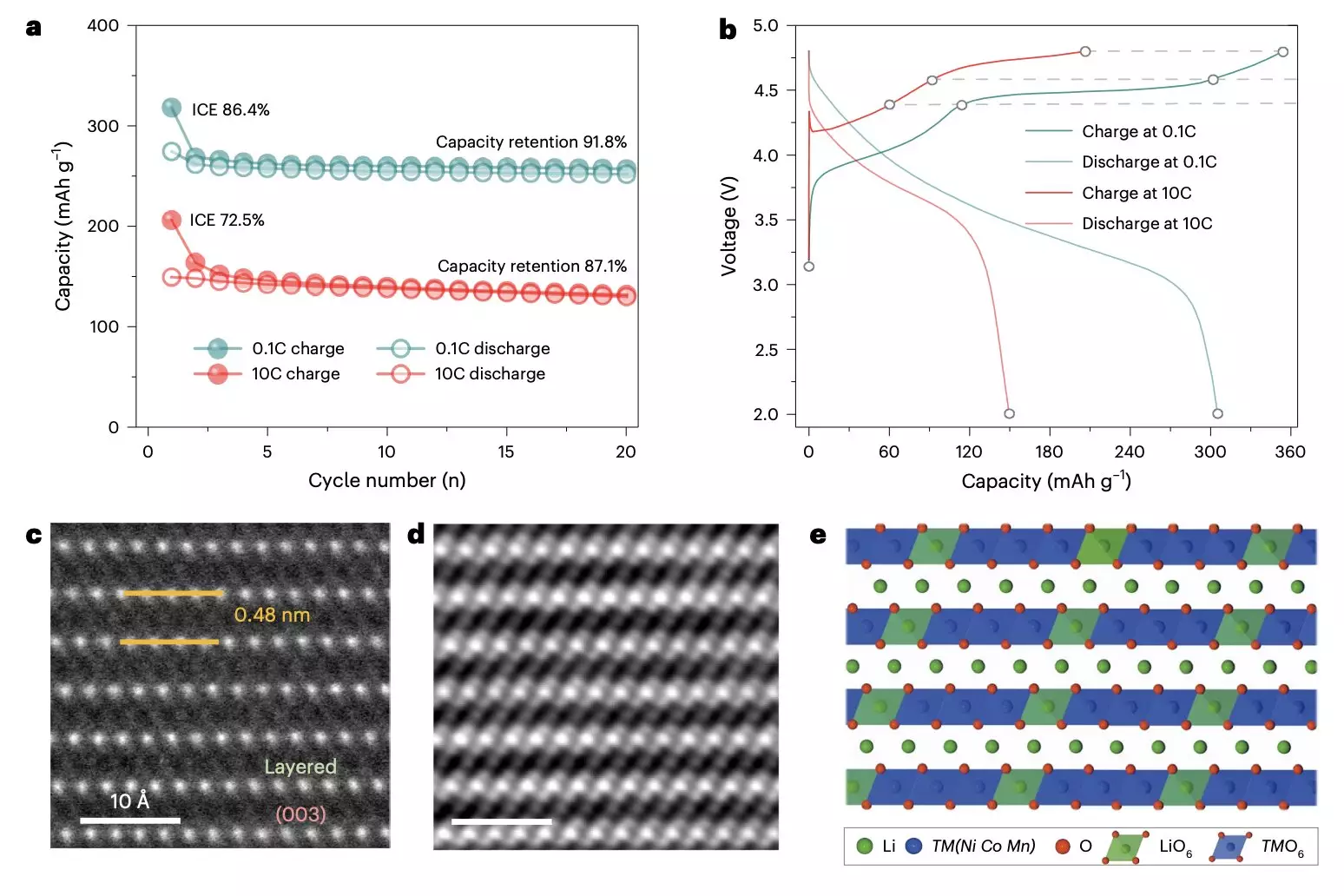The relentless pursuit of advanced battery technologies has become a cornerstone of modern energy solutions, driving innovation across various industries, particularly electric vehicles and portable electronics. The primary goal of researchers is to engineer batteries that can hold more power, recharge at unprecedented speeds, maintain their charge for longer durations, and withstand the test of time. Central to this endeavor is the investigation into new cathode materials, which play a critical role in determining a battery’s overall performance. Among these innovations, layered lithium-rich transition metal oxides have garnered significant attention, emerging as promising candidates that could transform the landscape of rechargeable batteries.
Layered lithium-rich metal oxides offer unique structural benefits that enhance their capacity as cathodes. Their layered architecture facilitates efficient lithium-ion movement during charging and discharging, which is crucial for the battery’s functionality. Additionally, the rich lithium content inherently allows these materials to store and discharge greater amounts of energy compared to traditional cathodes. Coupled with transition metals like manganese, cobalt, and nickel, these materials enable essential redox reactions—key processes that drive the flow of electrons necessary for energy production within batteries.
However, despite the advantages of layered lithium-rich cathodes, their path to widespread application faces significant challenges. One of the most pressing issues is their tendency to degrade over time, resulting in a loss of voltage and overall performance. This rapid deterioration has prompted extensive research to investigate the underlying causes of these failures, as understanding these mechanisms is vital for improving the durability and effectiveness of future battery technologies.
A collaborative study conducted by researchers at Sichuan University and Southern University of Science and Technology, among other institutions, has significantly contributed to this understanding. Their research, recently published in *Nature Nanotechnology*, sheds light on the multifaceted aspects of structural, chemical, and thermodynamic factors that contribute to the degradation of layered lithium-rich oxide cathodes. According to lead researchers Zhimeng Liu and Yuqiang Zeng, this comprehensive study encompasses a wide range of analyses, from individual atomic behavior to the interactions between secondary particles.
Utilizing advanced imaging techniques such as energy-resolved transmission X-ray microscopy (TXM), the research team meticulously examined the cathodes at both nanoscale and microscale levels. This high-resolution approach revealed critical insights into oxygen defects and structural distortions that manifest as the battery operates. For instance, the formation of oxygen defects during the first cycle of the battery’s life triggered various degradation pathways that ultimately compromise performance.
A key finding of the study highlights that slow electrochemical activation leads to the buildup of oxygen defects, initiating a series of progressive structural transformations within the cathode. Liu and Zeng’s team notes that ultrafast lithium intercalation—where lithium ions rapidly enter and exit the layered structure—results in significant lattice distortions. This process can cause dissolution of transition metal ions and localized variations in lithium sites, yielding irreversible structural changes. These complex phenomena collectively lead to reduced Coulombic efficiency and continual degradation manifested through cracking and particle expansion in subsequent cycles.
By dissecting these interactions at such a granular level, the researchers have provided invaluable insights into the complexities underlying the degradation phenomena of layered lithium-rich cathodes. Their findings not only clarify the intricacies involved but also establish a foundation for developing future strategies aimed at mitigating these degrading effects.
As the world increasingly relies on energy-dense batteries, particularly in the context of sustainable transportation and renewable energy storage, the findings from this comprehensive study hold great promise. By addressing the structural and chemical issues identified, future research could focus on optimizing the design of layered lithium-rich transition metal oxides to enhance their longevity and performance. The integration of these insights paves the way for the next generation of batteries that not only meet the demands of modern technology but also promote a cleaner and more efficient energy landscape. Through continued exploration in this field, we inch closer to unlocking the full potential of battery technology, rendering it more robust and reliable for years to come.


Leave a Reply